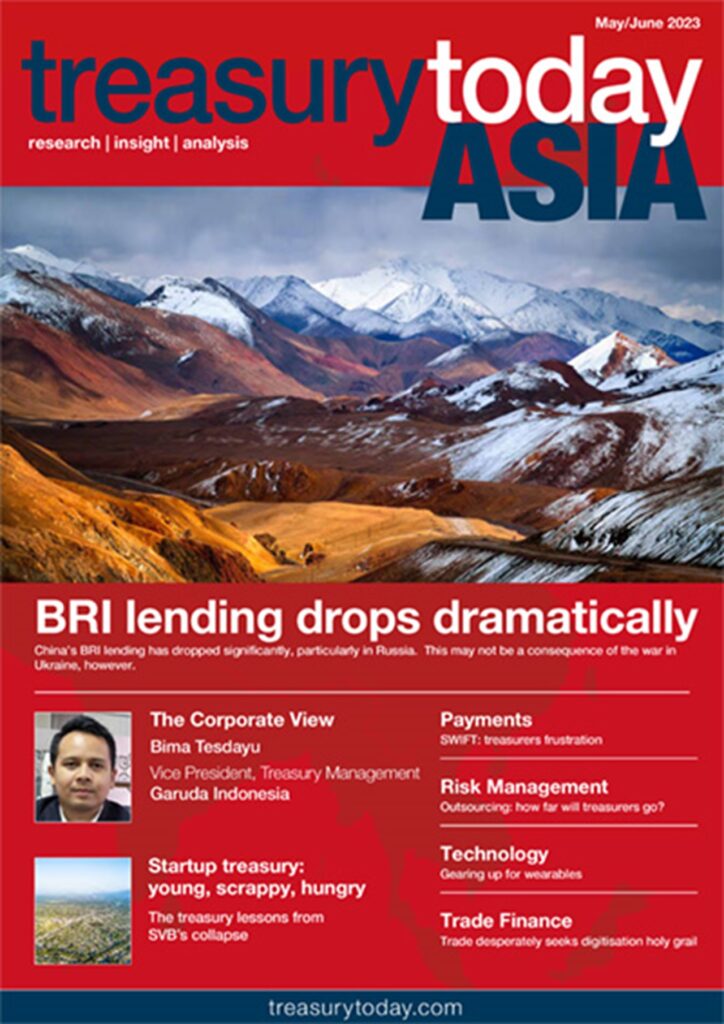Contents
- Editorial
- Out with the old, in with the new?
- Insight & Analysis
- China’s appetite for BRI lending wanes
- Payments
- SWIFT: corporates voice payments frustration
- The Corporate View
- Corporate View: Bima Tesdayu, Garuda Indonesia
- Risk Management
- Is outsourcing a cop out?
- Smarter Treasury: Citi
- Global payments transformation: where next?
- Technology
- Treasurers gear up for wearables
- Trade
- Trade desperately seeks digitisation holy grail
- Treasury Talent
- Startup treasury: lessons from SVB’s collapse
- Question Answered
- Question Answered: Higher interest rates
Editorial
Out with the old, in with the new?
Innovation, transformation and change are affecting how treasuries are run, but in many ways, treasurers still have to make do with existing structures, systems and processes.
Where there is change, the old ways can still persist. For example, China’s Belt and Road Initiative (BRI) engagement with Russia has dropped, but this does not mean there is no engagement at all. Rather, it is now being done in a different way. And, despite the sanctions, Western products are still being sold in Russia.
Transformation and innovation are a major feature of the payments landscape, but where there are exciting, new ways of doing things, the old systems are still in place. In this issue, we look at what payments transformation means for treasurers, and also SWIFT on its 50th anniversary and consider the frustrations that remain.
Treasury teams are also making other decisions about how to do things differently. When it comes to outsourcing, specific treasury skills has been off-limits, but now outsourcing areas that are non-core is becoming increasingly popular. Trade, meanwhile, is still stuck in the traditional way of doing things, with some processes being hundreds of years old. There has been plenty of innovation, but many initiatives have failed to gain traction. We look at this and consider how innovations need to focus on the actual business problem that is being solved, and not to do too much at once. This trajectory has worked for wearable technology, which began to be used for specific purposes – such as health and fitness tracking – and now the use cases are exploding, including corporate treasury.
With the collapse of Silicon Valley Bank some serious lessons have been learned, with some risk management practices changing, particularly when it comes to concentration risk. In amongst all this change, one thing that is clear is that the role of the treasurer is increasingly strategic, a point that is explored in this issue’s Corporate View.


